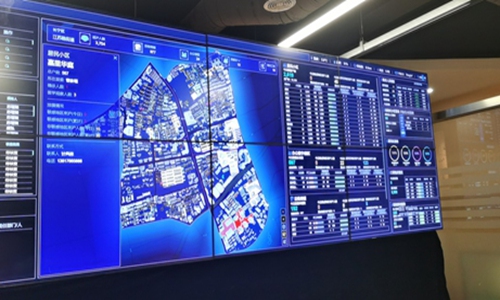HOME >> CHINA
Shanghai: O2O data platform helps city gather epidemic related information
By Huang Lanlan Source:Global Times Published: 2020/2/16 18:13:40

The O2O data platform at Jiangsu Road subdistrict of Shanghai shows epidemic related information Photo: Courtesy of Zhang Zheren
These residents are requested to stay at home for 14 days of self-quarantine to reduce the risks of virus infection and transmission. Nonetheless, one of them was caught walking his dog outside by a neighbor. The person was soon stopped by a community staffer, who persuaded him to go home and disinfected the areas he had just been to.
The entire process took only 20 minutes with the help of an O2O data platform specifically built for the epidemic, said Zhang Zheren, director of the platform in the sub-district.
"After receiving the neighbor's report, the platform automatically sent a WeChat message to the nearest staffer to deal with it as quickly as possible," Zhang explained.
At Zhang's office, there is a huge screen showing a map of this 1.52-square-kilomter sub-district. Buildings that host residents returning from Hubei are marked in red on the map. "It reminds us to disinfect these buildings more frequently than other areas," Zhang told the Global Times Saturday.
The information was collected by the sub-district staffers who regularly visit these places. Before the O2O platform was built, staffers had to fill in dozens of forms every day, which was time-consuming and laborious, Zhang said.
"Now they can submit to the platform via WeChat within seconds," he added.
For the people who returned from Hubei, the platform keeps their health condition updated by collecting feedback from their nearby sub-district staffers who ask about their situations every day.
"Once someone feels unwell, we will know and give a helping hand immediately," Zhang said.
The O2O data platform, designed by local housing authority, was first put into use in Jiangsu Road sub-district on February 7 as a pilot project against the COVID-19 epidemic.
It will be gradually extended to other sub-districts across this city amid the outbreak, Zhang said.
The sharing, utilization and management of big data will also contribute in the Shanghai's ongoing smart city construction, observers said.
By making use of the existing big database, the city is going to establish a unified public data-sharing mechanism that covers fields including government affairs, social credit, healthcare, finance, information infrastructure and network security, according to the document local government issued on accelerating smart city construction on February 10.
Shanghai will be built into a global-leading smart city and an important hub of international digital economy network by the year of 2022, the document said.
RELATED ARTICLES: